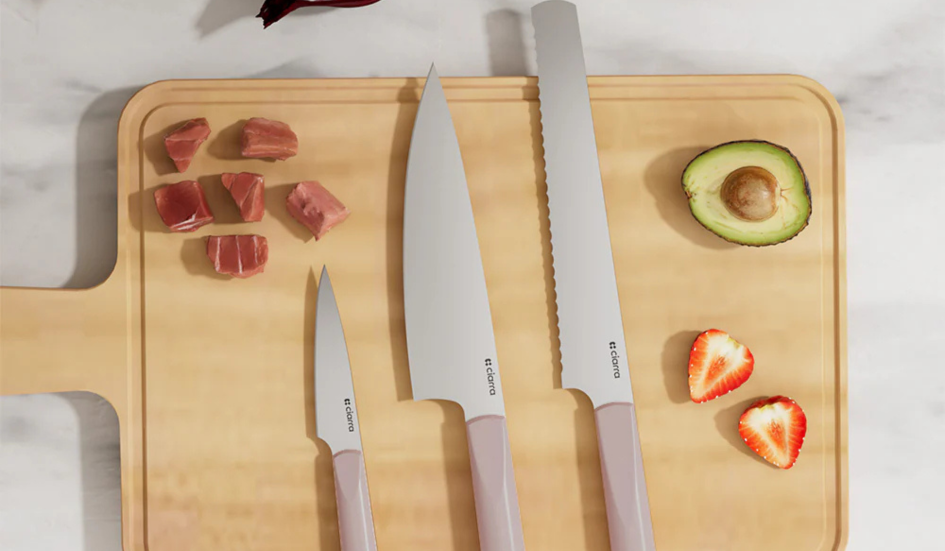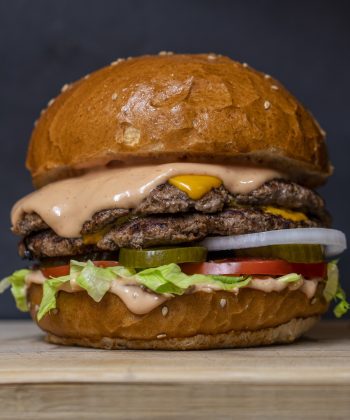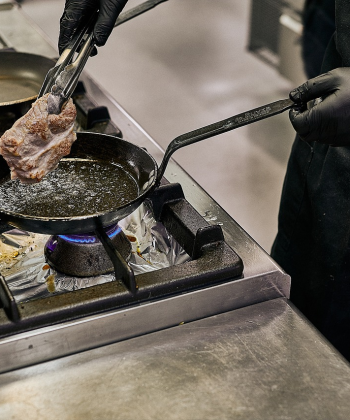
Choosing the right knife set for your kitchen is an essential step toward achieving culinary excellence. The right tools can make food preparation easier, safer, and more efficient. Knives are not just for cutting—they’re an investment that can influence the quality of your cooking and the enjoyment of the process. With so many options available, it can be overwhelming to decide what knife set will suit your needs. This guide will help you understand the key factors to consider when selecting the perfect knife set for your kitchen.
Understanding the Basics of Knife Sets
A knife set typically includes a variety of knives that serve different purposes. Most sets will include a chef’s knife, a paring knife, a bread knife, and other specialty knives. These tools are designed to work in tandem to make your cooking more efficient. A quality knife set can elevate the way you prepare food, while a poor set can cause frustration and slow down your work. When choosing a knife set, it’s important to think about your cooking habits, the types of meals you prepare, and your budget. Proper knife handling skills are essential for kitchen safety and are often covered in a first aid course.
Types of Knives in a Knife Set
The foundation of any good knife set is the core knives that every kitchen should have. The most common types include the chef’s knife, paring knife, utility knife, and serrated bread knife. Each of these knives serves a distinct purpose. The chef’s knife is the most versatile and is ideal for chopping, slicing, and dicing.
A paring knife, on the other hand, is much smaller and is used for delicate tasks like peeling fruits and vegetables or creating intricate cuts. Understanding what is a paring knife used for is key to appreciating its importance in the set—it’s perfect for precision work that larger knives can’t handle.
Material Considerations for Knife Blades
One of the most important decisions you’ll make when selecting a knife set is the material of the blades. High-quality knives are typically made from stainless steel, carbon steel, or ceramic. Stainless steel is a popular choice due to its resistance to rust and corrosion, while carbon steel knives are known for their sharpness and ability to hold an edge longer. However, carbon steel knives require more maintenance to prevent rust.
Ceramic knives are lightweight and retain their sharpness for a long time, but they can be brittle and prone to chipping. Each material comes with its pros and cons, and the best choice depends on your preferences and how much care you’re willing to give your knives.
Choosing the Right Handle for Comfort and Control
The handle of a knife is just as important as the blade. A comfortable handle provides a secure grip, which is essential for safe and efficient use. Knife handles can be made from a variety of materials, including wood, plastic, stainless steel, and composite materials. Wood handles are classic and offer a comfortable grip, though they require regular maintenance to keep them looking good. Plastic and composite handles are often more durable and easier to clean, while stainless steel handles provide a sleek, modern look but can feel heavier. When choosing a knife set, consider the ergonomics of the handles and how they will feel in your hand during long periods of use.
The Importance of Knife Set Storage
Proper storage of your knives is crucial to maintaining their sharpness and prolonging their lifespan. Storing knives improperly can lead to damage, dulling, and even injury. Knife blocks are a common storage solution that can hold multiple knives safely. However, some people prefer magnetic strips or drawer organizers, which help free up counter space while keeping the knives secure. Regardless of the storage method you choose, it’s important to ensure that your knives are not jostled together in a way that could cause damage. Proper storage also prevents rust and keeps the blades sharp.
Consider Your Budget When Choosing a Knife Set
The price of knife sets can vary greatly, depending on the quality of the materials, the number of knives included, and the brand. High-end knife sets can cost several hundred dollars or more, while budget-friendly options are available for as low as $30. While it can be tempting to opt for the cheapest option, investing in a quality knife set will save you money in the long run.
Quality knives are more durable and will stay sharp longer, meaning you won’t need to replace them as often. If you’re just starting, it’s a good idea to invest in a set that includes the essential knives you need, and over time, you can add specialty knives to your collection.
Factors to Consider When Choosing a Knife Set
When selecting a knife set, you need to think about a few key factors. The first is how many knives you need. For most home cooks, a basic set that includes a chef’s knife, a paring knife, and a serrated knife is sufficient. If you frequently cook large meals or entertain, you may want to consider a larger set with more specialty knives.
Another important factor is how often you cook. If you’re someone who cooks daily, investing in a higher-quality knife set may be worth it. On the other hand, if you only cook occasionally, a more budget-friendly set may suffice. Additionally, you should consider the ease of sharpening. Some knives are easier to sharpen than others, and if you’re not familiar with the process, it’s worth opting for a set that’s simple to maintain.
The Role of Sharpness and Maintenance in Knife Sets
A sharp knife is safer and more effective than a dull one, and regular maintenance is essential to keep your knives in top condition. Most high-quality knives retain their sharpness for a long time, but they still need occasional honing and sharpening. Honing is a process that realigns the edge of the blade, while sharpening removes material from the blade to restore its edge. Some knife sets come with honing rods or sharpening tools, while others require you to purchase them separately. Depending on the material and type of knife, you may need to invest in specialized sharpening tools. Learning how to properly maintain your knives will extend their lifespan and improve their performance.
Conclusion
Choosing the perfect knife set for your kitchen involves careful consideration of your needs, preferences, and cooking habits. By understanding the types of knives you need, the materials and handles that suit your style, and how to properly store and maintain your knives, you can make an informed decision that will serve you well for years to come. Whether you are an experienced chef or a home cook, the right knife set can enhance your kitchen experience and make food preparation a joy.



